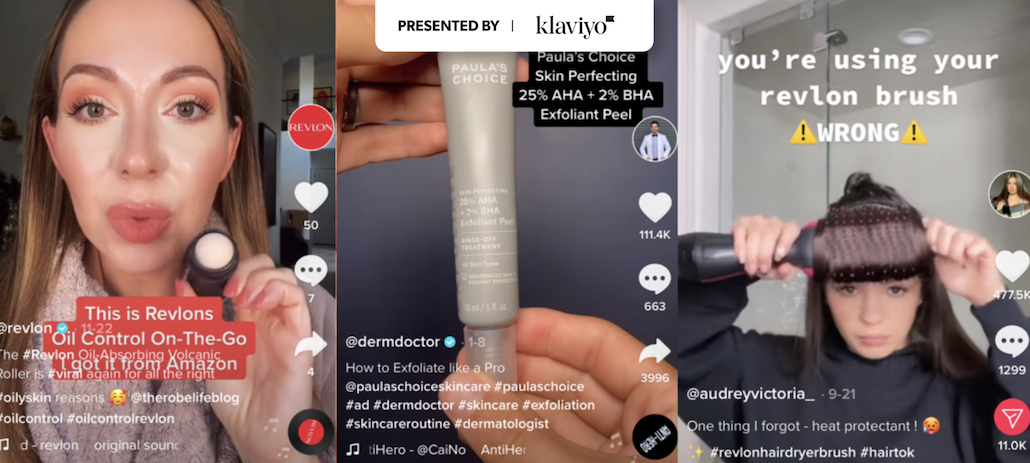2023 was a big year for social commerce. With the growth of apps like Flip and the launch of TikTok Shop in the U.S. in September, it felt like more of the world was finally catching up to the full convergence of social media and shopping that’s been the norm in China for years.
But that hasn’t been without its challenges. According to Insider Intelligence, social commerce will make up almost 6% of all retail sales in the U.S. by 2026, and around 40% of TikTok users plan to make at least one purchase on TikTok next year. Yet TikTok Shop is on track to lose $500 million in 2023, as TikTok has spent billions in building up its e-commerce business.
So far, customers and merchants are embracing TikTok Shop. A report from this month from The New Consumer found that 93% of TikTok Shop users are satisfied and 92% would shop there again.
Companies including Tarte and MyGemma have embraced the platform, despite the presence of counterfeit products. In November, Tarte hosted a 12-hour livestream on TikTok, which attracted more than 25,000 viewers. Seventy percent of the TikTok Shop sales during that period were from new Tarte customers who did not follow Tarte on the platform. Analysts told Glossy that, in 2024, they expect to see more social commerce platforms using a marketplace model, where independent sellers can list items without direct oversight by the platform. In 2022, 47% of all online purchases were made on marketplaces.
“In 2024, we’ll see social commerce try to move to marketplaces like we’re currently seeing with TikTok,” said Katie Moro, global head of managed service and regional manager of solutions in the Americas at e-commerce platform Producstup. “[Marketplaces] provide a more seamless transition into the shopping experience for consumers. We hear advertisers say they don’t want to [do social commerce] because they want control of the buyer’s journey, but I think the demand will end up winning.”
But the problem with marketplaces is often their loose regulations. TikTok is already facing this problem via its Shop, where a deluge of sketchy products sold at impossibly cheap prices is starting to make customers leery of what sellers can be trusted on the platform.
“The biggest challenge for social commerce is the customer experience,” said Emily Erkel, co-founder and CMO of LePrix, a wholesaler for sourcing authenticated, pre-owned luxury items, and an official partner for TikTok Shop sellers. “With so many types of retailers and P2P sellers, it is very much the Wild West. Anyone can sell anything anywhere, especially with [the rise of] live shopping. While this can be very beneficial, offering customers a wide range of products to choose from, it can also lead to fakes and bad sellers.”
And some brands are still quite skeptical of social commerce. Erik Allen Ford, founder of the menswear brand Buck Mason, said his brand has only a passing interest in social commerce for the coming year.
“We do have an Instagram Shop, but it hasn’t been a big thing for us,” he said. “It seems like something that could be good for independent brands, but it’s not a major initiative for us.”
Stormi Steele, founder of the beauty brand Canvas Beauty, said TikTok Shop has already been a success for the company. Since launching on TikTok Shop in September, her sales through the platform have gone from $2,000 per day to over $100,000 per day. Her top-selling product, a body glaze, has already sold $1 million worth on TikTok Shop alone.
“Selling on social media allows us to connect with our customers in a rich, video-first format that just isn’t possible with traditional channels like email. It gives us the ability to tell our story first, not focus on transactional ‘buy now’ buttons,” Steele said.
But Steele said it wasn’t all easy.
“The hardest component about a successful TikTok Shop strategy is being able to handle the virality of it all,” she said, noting that, In the first month on TikTok Shop, sales doubled every week, sometimes doubling every day. “We had to rebuild just about every part of our business to keep up with the extreme overnight demand without compromising our ship times. [But] it’s definitely a good problem to have.”
Analysts like Moro are confident that the sheer force of TikTok’s popularity, with over 1.6 billion users as of November 2023, will push TikTok Shop to success next year.
“Overall, social will continue to be ranked as the top channel for brands to use when connecting with their customers,” Moro said. “Brands embrace their role as relationship builders. Doubling down on social to power connections is the logical next step.”




